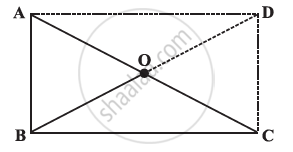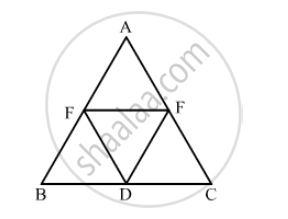Advertisements
Advertisements
Question
Which of the following statement are true for a square?
It has all its sides of equal length.
Solution
True
APPEARS IN
RELATED QUESTIONS
Explain why a rectangle is a convex quadrilateral.
ABC is a right-angled triangle and O is the mid point of the side opposite to the right angle. Explain why O is equidistant from A, B and C. (The dotted lines are drawn additionally to help you)

In the following figure, BDEF and DCEF are each a parallelogram. Is it true that BD = DC? Why or why not?

Which of the following statement is true for a rectangle?
It has two pairs of equal sides.
Which of the following statement is true for a rectangle?
Its diagonals are perpendicular.
Draw a rectangle whose one side measures 8 cm and the length of each of whose diagonals is 10 cm.
If the diagonals of a parallelogram are of equal lengths, the parallelogram is a rectangle. Prove it.
A parallelogram PQRS is constructed with sides QR = 6 cm, PQ = 4 cm and ∠PQR = 90°. Then PQRS is a ______.
All squares are rectangles.
In a rectangle ABCD, AB = 25 cm and BC = 15. In what ratio does the bisector of ∠C divide AB?
